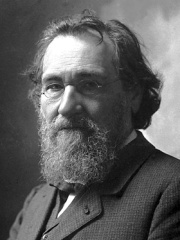
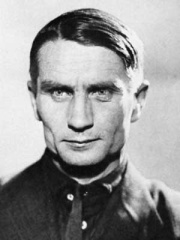
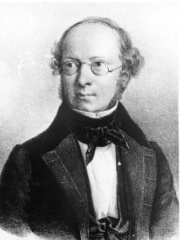
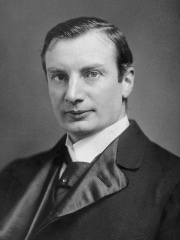
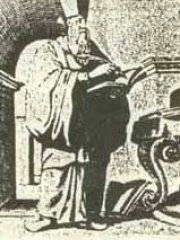

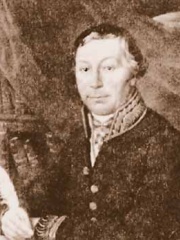

The Most Famous
BIOLOGISTS from Ukraine
This page contains a list of the greatest Ukrainian Biologists. The pantheon dataset contains 1,097 Biologists, 9 of which were born in Ukraine. This makes Ukraine the birth place of the 18th most number of Biologists behind Spain, and Norway.
Top 9
The following people are considered by Pantheon to be the most legendary Ukrainian Biologists of all time. This list of famous Ukrainian Biologists is sorted by HPI (Historical Popularity Index), a metric that aggregates information on a biography's online popularity.

1. Élie Metchnikoff (1845 - 1916)
With an HPI of 77.11, Élie Metchnikoff is the most famous Ukrainian Biologist. His biography has been translated into 80 different languages on wikipedia.
Ilya Ilyich Mechnikov (15 May [O.S. 3 May] 1845 – 15 July 1916), gallicised and known in Western sources as Élie Metchnikoff, was a zoologist from the Russian Empire of Moldavian noble ancestry best known for his research in immunology (study of immune systems) and thanatology (study of death). He and Paul Ehrlich were jointly awarded the 1908 Nobel Prize in Physiology or Medicine "in recognition of their work on immunity". Mechnikov was born in a region of the Russian Empire that is today part of modern-day Ukraine to a Moldavian noble father and a Ukrainian-Jewish mother. He later moved to France. Given this complex heritage, five different nations and peoples lay claim to Metchnikoff. Despite having a mother of Jewish origin, he was baptized Russian Orthodox, although he later became an atheist. Honoured as the "father of innate immunity", Metchnikoff was the first to discover a process of immunity called phagocytosis and the cell responsible for it, called phagocyte, specifically macrophage, in 1882. This discovery turned out to be the major defence mechanism in innate immunity, as well as the foundation of the concept of cell-mediated immunity, while Ehrlich established the concept of humoral immunity to complete the principles of immune system. Their works are regarded as the foundation of the science of immunology. Metchnikoff developed one of the earliest concepts in ageing, and advocated the use of lactic acid bacteria (Lactobacillus) for healthy and long life. This became the concept of probiotics in medicine. Mechnikov is also credited with coining the term gerontology in 1903 for the emerging study of aging and longevity. In this regard, Ilya Mechnikov is called the "father of gerontology" (although, as often happens in science, the same title is sometimes applied to multiple people who contributed to aging research). Supporters of life extension celebrate 15 May as Metchnikoff Day and use it as a memorable date for organizing activities.

2. Trofim Lysenko (1898 - 1976)
With an HPI of 74.66, Trofim Lysenko is the 2nd most famous Ukrainian Biologist. His biography has been translated into 48 different languages.
Trofim Denisovich Lysenko (Russian: Трофи́м Дени́сович Лысе́нко; Ukrainian: Трофи́м Дени́сович Лисе́нко, romanized: Trofym Denysovych Lysenko, IPA: [troˈxɪm deˈnɪsowɪtʃ lɪˈsɛnko]; 29 September [O.S. 17 September] 1898 – 20 November 1976) was a Soviet agronomist and scientist. He was a proponent of Lamarckism, and rejected Mendelian genetics in favour of his own idiosyncratic, pseudoscientific ideas later termed Lysenkoism. In 1940, Lysenko became director of the Institute of Genetics of the Soviet Academy of Sciences, and he used his political influence and power to suppress dissenting opinions and discredit, marginalize, and imprison his critics, elevating his anti-Mendelian theories to state-sanctioned doctrine. Soviet scientists who refused to renounce genetics were dismissed from their posts and left destitute. Several were imprisoned including the botanist Nikolai Vavilov. Lysenko's ideas and practices contributed to the famines that killed millions of Soviet people; the adoption of his methods from 1958 in the People's Republic of China had similarly calamitous results, contributing to the Great Chinese Famine of 1959 to 1961.

3. Alexander Georg von Bunge (1803 - 1890)
With an HPI of 67.14, Alexander Georg von Bunge is the 3rd most famous Ukrainian Biologist. His biography has been translated into 33 different languages.
Alexander Georg von Bunge (Russian: Алекса́ндр Андре́евич Бу́нге; 6 October [O.S. 24 September] 1803 – 18 July [O.S. 6 July] 1890) was a Russian botanist. He is best remembered for scientific expeditions into Asia and especially Siberia.

4. Waldemar Haffkine (1860 - 1930)
With an HPI of 65.95, Waldemar Haffkine is the 4th most famous Ukrainian Biologist. His biography has been translated into 33 different languages.
Waldemar Mordechai Wolff Haffkine , born Vladimir Aronovich (Markus-Volf) Khavkin (Russian: Владимир Аронович (Маркус-Вольф) Хавкин; 15 March 1860 – 26 October 1930) was a Russian-French bacteriologist known for his pioneering work in vaccines. Haffkine was educated at the Imperial Novorossiya University and later emigrated first to Switzerland, then to France, working at the Pasteur Institute in Paris, where he developed a cholera vaccine that he tried out successfully in India. He is recognized as the first microbiologist who developed and used vaccines against cholera and bubonic plague. He tested the vaccines on himself. Joseph Lister named him "a saviour of humanity". He was appointed Companion of the Order of the Indian Empire (CIE) in Queen Victoria's 1897 Diamond Jubilee Honours. At that time The Jewish Chronicle noted "a Ukraine Jew, trained in the schools of European science, saves the lives of Hindus and Mohammedans and is decorated by the descendant of William the Conqueror and Alfred the Great." He naturalised as a British subject in 1900. In his final years Haffkine became more religious, becoming an advocate and philanthropist for Orthodox Jewish causes and a supporter of Zionism.
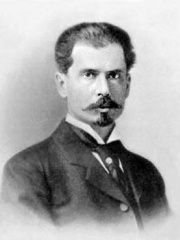
5. Sergei Winogradsky (1856 - 1953)
With an HPI of 64.32, Sergei Winogradsky is the 5th most famous Ukrainian Biologist. His biography has been translated into 29 different languages.
Sergei Nikolaevich Winogradsky (Russian: Сергей Николаевич Виноградский; Ukrainian: Сергій Миколайович Виноградський; 13 September [O.S. 1 September] 1856 – 24 February 1953), also published under the name Sergius Winogradsky, was a Ukrainian and Russian microbiologist, ecologist and soil scientist who pioneered the cycle-of-life concept. Winogradsky discovered the first known form of lithotrophy during his research with Beggiatoa in 1887. He reported that Beggiatoa oxidized hydrogen sulfide (H2S) as an energy source and formed intracellular sulfur droplets. This research provided the first example of lithotrophy, but not autotrophy. Born in the capital of present-day Ukraine, his legacy is also celebrated by this nation. His research on nitrifying bacteria would report the first known form of chemoautotrophy, showing how a lithotroph fixes carbon dioxide (CO2) to make organic compounds. He is best known in school science as the inventor of the Winogradsky column technique for the study of sediment microbes.

6. Michał Boym (1614 - 1659)
With an HPI of 62.31, Michał Boym is the 6th most famous Ukrainian Biologist. His biography has been translated into 17 different languages.
Michał Piotr Boym, SJ (Chinese: 卜彌格; pinyin: Bǔ Mígé; c. 1612 – 22 June 1659) was a Polish Jesuit missionary, scientist, and explorer active in China during the 17th century. He was among the first Westerners to travel extensively within the Chinese mainland and is credited with introducing European audiences to aspects of Chinese geography, medicine, and natural history. Boym authored several important works, including treatises on Asian flora and fauna, and a detailed account of the Ming–Qing transition. The first known Chinese–European dictionary, published posthumously in 1670, is often attributed to Boym.

7. Ludwik Fleck (1896 - 1961)
With an HPI of 62.01, Ludwik Fleck is the 7th most famous Ukrainian Biologist. His biography has been translated into 19 different languages.
Ludwik Fleck (Polish pronunciation: [lud.vik flɛk], Hebrew: לודוויק פלק; 11 July 1896 – 5 June 1961) was a Polish and Israeli physician and biologist who did important work in epidemic typhus in Lwów, Poland, with Rudolf Weigl and in the 1930s developed the concepts of "Denkstil" ("thought style") and "Denkkollektiv" ("thought collective"). Fleck's concept of "thought collective" is important in the philosophy of science and in logology (the "science of science"), helping explain how scientific ideas change over time, much as in Thomas Kuhn's later notion of "paradigm shift" (on Fleck's possible influence on Kuhn, see Jarnicki and Greif) and in Michel Foucault's concept of "episteme". Fleck's account of the development of facts at the intersection of active elements of a thought collective and the passive resistances of nature provides a way of considering the culture of modern science as evolutionary and evidence-oriented.

8. Ivan Martinov (1771 - 1833)
With an HPI of 61.42, Ivan Martinov is the 8th most famous Ukrainian Biologist. His biography has been translated into 20 different languages.
Ivan Ivanovich Martinov (the last name also spelled Martynov, Russian: Иван Иванович Мартынов; 1771 – 1833 in Saint Peterburg) was a Russian botanist and philologist. He died on October 20 (November 1), 1833.

9. Alexander Alfonsovich Grossheim (1888 - 1948)
With an HPI of 55.38, Alexander Alfonsovich Grossheim is the 9th most famous Ukrainian Biologist. His biography has been translated into 15 different languages.
Alexander Alfonsovich Grossheim (6 March 1888 – 4 December 1948) was a Soviet botanist of German descent. He traveled widely over the Caucasus region collecting and studying various different plant life. He is most known for Pteridophytes and Spermatophytes species.
People
Pantheon has 9 people classified as Ukrainian biologists born between 1614 and 1898. Of these 9, none of them are still alive today. The most famous deceased Ukrainian biologists include Élie Metchnikoff, Trofim Lysenko, and Alexander Georg von Bunge.
Deceased Ukrainian Biologists
Go to all RankingsÉlie Metchnikoff
1845 - 1916
HPI: 77.11
Trofim Lysenko
1898 - 1976
HPI: 74.66
Alexander Georg von Bunge
1803 - 1890
HPI: 67.14
Waldemar Haffkine
1860 - 1930
HPI: 65.95
Sergei Winogradsky
1856 - 1953
HPI: 64.32
Michał Boym
1614 - 1659
HPI: 62.31
Ludwik Fleck
1896 - 1961
HPI: 62.01
Ivan Martinov
1771 - 1833
HPI: 61.42
Alexander Alfonsovich Grossheim
1888 - 1948
HPI: 55.38
Overlapping Lives
Which Biologists were alive at the same time? This visualization shows the lifespans of the 8 most globally memorable Biologists since 1700.

